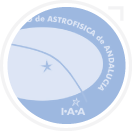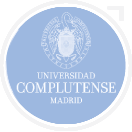A solar escalator on Mars: Self-lifting of dust layers by radiative heating, Geophysical Research Letters
September, 2015
ABSTRACT Dust layers detected in the atmosphere of Mars by the light detection and ranging (LIDAR) instrument on the Phoenix Mars mission are explained using an atmospheric general circulation model. The layers were traced back to observed dust storm activity near the edge of the north polar ice cap where simulated surface winds exceeded the threshold for dust lifting by saltation. Heating of the atmospheric dust by solar radiation caused buoyant instability and mixing across the top of the planetary boundary layer (PBL). Differential advection by wind shear created detached dust layers above the PBL... read more
ACS experiment for atmospheric studies on "ExoMars-2016" Orbiter
December, 2015
ABSTRACT ACS is a set of spectrometers for atmospheric studies (Atmospheric Chemistry Suite). It is one of the Russian instruments for the Trace Gas Orbiter (TGO) of the Russian-European "ExoMars" program. The purpose of the experiment is to study the Martian atmosphere by means of two observations regimes: sensitive trace gases measurements in solar occultations and by monitoring the atmospheric state during nadir observations. The experiment will allow us to approach global problems of Mars research such as current volcanism, and the modern climate status and its evolution. Also, the experiment is... read more
Analysing the consistency of Martian methane observations by investigation of global methane transport
September, 2015
ABSTRACT Reports of methane on Mars at different times imply varying spatial distributions. This study examines whether different observations are mutually consistent by using a global circulation model to investigate the time evolution of methane in the atmosphere. Starting from an observed plume of methane, consistent with that reported in 2003 from ground-based telescopes, multiple simulations are analysed to investigate what is required for consistency with an inferred methane signal from the Thermal Emission Spectrometer made 60 sols later. The best agreement between the existing observations is... read more
Cooling of the Martian thermosphere by CO2 radiation and gravity waves: An intercomparison study with two general circulation models
May, 2015
ABSTRACT Observations show that the lower thermosphere of Mars (∼100–140 km) is up to 40 K colder than the current general circulation models (GCMs) can reproduce. Possible candidates for physical processes missing in the models are larger abundances of atomic oxygen facilitating stronger CO2 radiative cooling and thermal effects of gravity waves. Using two state-of-the-art Martian GCMs, the Laboratoire de Météorologie Dynamique and Max Planck Institute models that self-consistently cover the atmosphere from the surface to the thermosphere, these physical mechanisms are investigated. Simulations... read more
Numerical modelling of the transport of trace gases including methane in the subsurface of Mars
April, 2015
ABSTRACT We model the transport of gas through the Martian subsurface in order to quantify the timescales of release of a trace gas with a source at depth using a Fickian model of diffusion through a putative Martian regolith column. The model is then applied to the case of methane to determine if diffusive transport of gas can explain previous observations of methane in the Martian atmosphere. We investigate which parameters in the model have the greatest effect on transport timescales and show that the calculated diffusivity is very sensitive to the pressure profile of the subsurface, but relatively... read more
Removal of atmospheric features in near infrared spectra by means of principal component analysis and target transformation on Mars: I. Method
June, 2015
ABSTRACT The aim of this work is to extract the surface contribution in the Martian visible/near-infrared spectra removing the atmospheric components by means of Principal Component Analysis (PCA) and target transformation (TT). The developed technique is suitable for separating spectral components in a data set large enough to enable an effective usage of statistical methods, in support to the more common approaches to remove the gaseous component. In this context, a key role is played by the estimation, from the spectral population, of the covariance matrix that describes the statistical correlation... read more
Science objectives and performances of NOMAD, a spectrometer suite for the ExoMars TGO mission
December, 2015
ABSTRACT The NOMAD spectrometer suite on the ExoMars Trace Gas Orbiter will map the composition and distribution of Mars' atmospheric trace species in unprecedented detail, fulfilling many of the scientific objectives of the joint ESA-Roscosmos ExoMars Trace Gas Orbiter mission. The instrument is a combination of three channels, covering a spectral range from the UV to the IR, and can perform solar occultation, nadir and limb observations. In this paper, we present the science objectives of the instrument and how these objectives have influenced the design of the channels. We also discuss the expected... read more
Seasonal variation of the HDO/H2O ratio in the atmosphere of Mars at the middle of northern spring and beginning of northern summer
November, 2015
ABSTRACT We present the seasonal variation of the HDO/H2O ratio caused by sublimation-condensation processes in a global view of the Martian water cycle. The HDO/H2O ratio was retrieved from ground-based observations using high-dispersion echelle spectroscopy of the Infrared Camera and Spectrograph (IRCS) of the Subaru telescope. Coordinated joint observations were made by the Planetary Fourier Spectrometer (PFS) onboard Mars Express (MEX). The observations were performed during the middle of northern spring (Ls = 52°) and at the beginning of summer (Ls = 96°) in Mars Year 31. The retrieved... read more
Sulfur in the early Martian atmosphere revisited: Experiments with a 3-D Global Climate Model
November, 2015
ABSTRACT Volcanic SO2 in the Martian atmosphere has been invoked as a way to create a sustained or transient greenhouse during early Martian history. Many modeling studies have been performed to test the feasibility of this hypothesis, resulting in a range of conclusions, from highly feasible to highly improbable. In this study we perform a wide range of simulations using the 3-D Laboratoire de Météorologie Dynamique Generic Global Climate Model (GCM) in order to place earlier results into context and to explore the sensitivity of model outcomes to parameters such as SO2 mixing ratio, atmospheric H2O... read more
The Imaging Ultraviolet Spectrograph (IUVS) for the MAVEN Mission
December, 2015
ABSTRACT The Imaging Ultraviolet Spectrograph (IUVS) is one of nine science instruments aboard the Mars Atmosphere and Volatile and EvolutioN (MAVEN) spacecraft. MAVEN, launched in November 18, 2013 and arriving at Mars in September 2014, is designed to explore the planet's upper atmosphere and ionosphere and examine their interaction with the solar wind and solar ultraviolet radiation. IUVS is one of the most powerful spectrographs sent to another planet, with several key capabilities: (1) separate Far-UV & Mid-UV channels for stray light control, (2) a high resolution echelle mode to resolve... read more
The physics of Martian weather and climate: a review
December, 2015
ABSTRACT The planet Mars hosts an atmosphere that is perhaps the closest in terms of its meteorology and climate to that of the Earth. But Mars differs from Earth in its greater distance from the Sun, its smaller size, its lack of liquid oceans and its thinner atmosphere, composed mainly of CO2. These factors give Mars a rather different climate to that of the Earth. In this article we review various aspects of the Martian climate system from a physicist’s viewpoint, focusing on the processes that control the Martian environment and comparing these with corresponding processes on Earth. These include... read more
The solsticial pause on Mars: 2 modelling and investigation of causes
January, 2016
ABSTRACT The Martian solsticial pause, presented in a companion paper (Lewis et al., 2016), was investigated further through a series of model runs using the UK version of the LMD/UK Mars Global Climate Model. It was found that the pause could not be adequately reproduced if radiatively active water ice clouds were omitted from the model. When clouds were used, along with a realistic time-dependent dust opacity distribution, a substantial minimum in near-surface transient eddy activity formed around solstice in both hemispheres. The net effect of the clouds in the model is, by altering the thermal... read more
Unique Spectroscopy and Imaging of Mars with JWST
October, 2015
ABSTRACT In this document, we summarize the main capabilities of the James Webb Space Telescope (JWST) for performing observations of Mars. The distinctive vantage point of JWST at the Sun-Earth Lagrange point (L2) will allow sampling the full observable disk, permitting the study of short-term phenomena, diurnal processes (across the East-West axis) and latitudinal processes between the hemispheres (including seasonal effects) with excellent spatial resolutions (0.07 arcsec at 2 {\mu}m). Spectroscopic observations will be achievable in the 0.7-5 {\mu}m spectral region with NIRSpec at a maximum... read more
Variability of the Martian thermosphere during eight Martian years as simulated by a ground-to-exosphere global circulation model
November, 2015
ABSTRACT Using a ground-to-exosphere general circulation model for Mars we have simulated the variability of the dayside temperatures at the exobase during eight Martian years (MY, from MY24 to MY31, approximately from 1998 to 2013), taking into account the observed day-to-day solar and dust load variability. We show that the simulated temperatures are in good agreement with the exospheric temperatures derived from Precise Orbit Determination of Mars Global Surveyor. We then study the effects of the solar variability and of two planetary-encircling dust storms on the simulated temperatures. The... read more
































